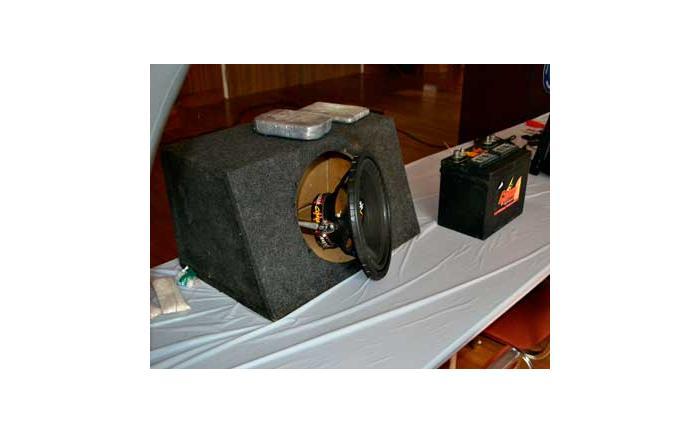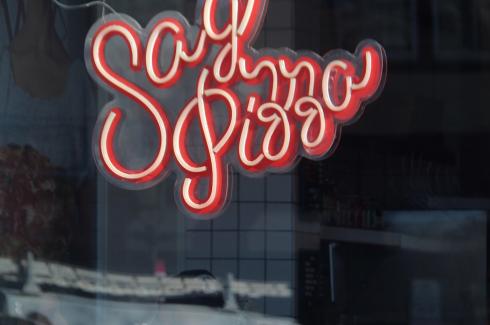The discovery by East Hampton Village police of a large cache of marijuana reportedly concealed under the hood of a BMW during a routine traffic stop in May was the impetus for a day-long class for law enforcement officials on the variety of ways criminals conceal drugs, weapons, cash, and other contraband in a vehicle. Conducted at East Hampton Village police headquarters on Friday by Jason Robles, a New York State trooper who freelances with Palestra Group International, the eight-hour course drew 71 law enforcement professionals from agencies as diverse as the East Hampton Village and New York City Police Departments, the Drug Enforcement Administration, the Suffolk County District Attorney’s office, and the New York arm of the National Guard Drug Task Force. Mr. Robles used models to illustrate his points, and also explained some of the telltale signs that contraband may be concealed in a car. One of them: a cellphone with its battery and SIM card removed. The driver will have instructions to go to a certain location without knowing the final destination. Upon arrival, “Put in the battery, put in the SIM card, and press send twice,” Mr. Robles said. The driver will then get directions to a final destination and will dispose of the phone. A lot of drivers carrying contraband will consent to a police search of a vehicle during a traffic stop, Mr. Robles said. Why? “One, they want to seem cooperative. Two, they have been searched before and have beaten us.” The third reason is quite basic: “They don’t want you to call in a dog. They would rather our nose conduct the search than a dog’s nose.” It was a human’s nose, as well as experience in searching vehicles, that led to the drug arrest of Dennis T. Moore, 21, of East Hampton, during that May traffic stop on East Hampton’s Main Street. Police said they found 17 small packets of marijuana inside the BMW, but suspected that there were more. Sgt. Kevin Duchemin, the second officer on the scene, conducted a more extensive search, starting with the front of the car, where police noticed a strong smell of marijuana. The hood release was not working. Instead, the sergeant, using a screwdriver, hooked the release wire, and popped the hood open. Under the hood, he allegedly discovered a Magna Vault box, which attaches to metal surface via powerful magnets. Inside, police said, were two scales, numerous plastic bags, and enough marijuana to raise the charge against Mr. Smith to the misdemeanor level. Two younger officers expressed interest in learning proper technique for vehicle searches, so Sergeant Duchemin put together the class with Mr. Robles. There are many different voids inside the structure of a car where contraband can be hidden, Mr. Robles told his class on Friday. These include bumpers, wheel wells, speakers, the space where the GPS system is installed, and within the frame itself. Frequently the hiding spots are protected by doors that are wired into the car’s electrical system and can only be opened by remote control. Sometimes, he said, these doors are booby-trapped, so the crew of officers conducting a search should step away from the car when a trap door is activated. “How great is it that we can use the bad guy’s own car to defeat his own trap?” Mr. Robles said, as he showed the class how to bypass the wiring used to conceal the contraband and activate the trap door using alligator clips running from the car’s battery to the door’s mechanism. Mr. Robles, a 20-year veteran of the New York State police, started Palestra with other officers in 2008. Besides teaching techniques for executing car searches, Palestra also gives classes covering narcotics investigation and street gangs to police forces around the country and in Canada and Mexico. The classes are paid for in part through the High Intensity Drug Trafficking Areas program and in part by the participating agencies. The federal prosecutor’s office of the Western District of New York cosponsored Friday’s course. The first time he found a hidden compartment in a car “was 1996, I think. I found a trap by chance.” Now, he teaches officers how to use technique, not chance, to fight crime.
Attempted Swatting in Sag Harbor
Sag Harbor Village police have received several reports of “swatting” calls, falsely reporting an emergency, from Main Street businesses recently, three involving Sag Pizza and another, last week, involving Apple Bank.
In East Hampton Village, the Cameras Are Watching
East Hampton Village’s new Flock license-plate reader cameras are having an immediate effect here. Out of 18 arrests reported by village police in the last two weeks, 14 were made with the assistance of the cameras.
On the Police Logs 04.17.25
A coyote was spotted in the vicinity of Hither Hills State Park in Montauk on the morning of April 7. The man who reported it said he was worried about the safety of neighborhood pets.
Ambulance Corps Looks to Next Generation
The Sag Harbor Volunteer Ambulance Corps is hoping to broaden its membership by allowing Sag Harbor residents who are in college, or doing an equivalent educational program, to be eligible to volunteer.
Your support for The East Hampton Star helps us deliver the news, arts, and community information you need. Whether you are an online subscriber, get the paper in the mail, delivered to your door in Manhattan, or are just passing through, every reader counts. We value you for being part of The Star family.
Your subscription to The Star does more than get you great arts, news, sports, and outdoors stories. It makes everything we do possible.




